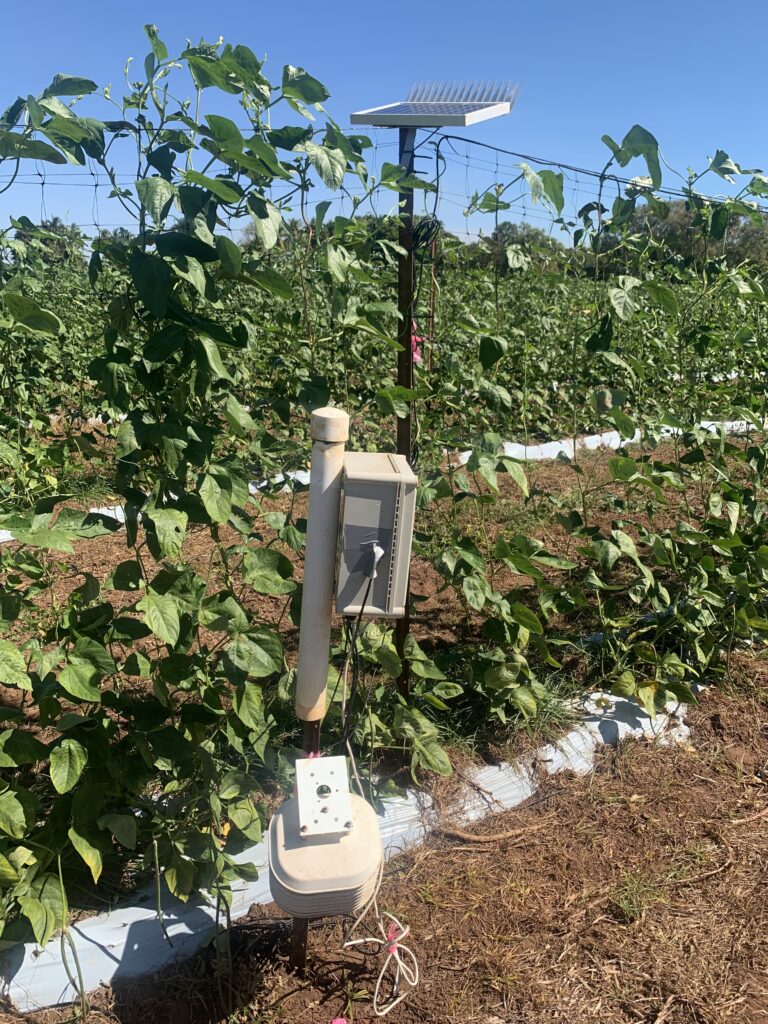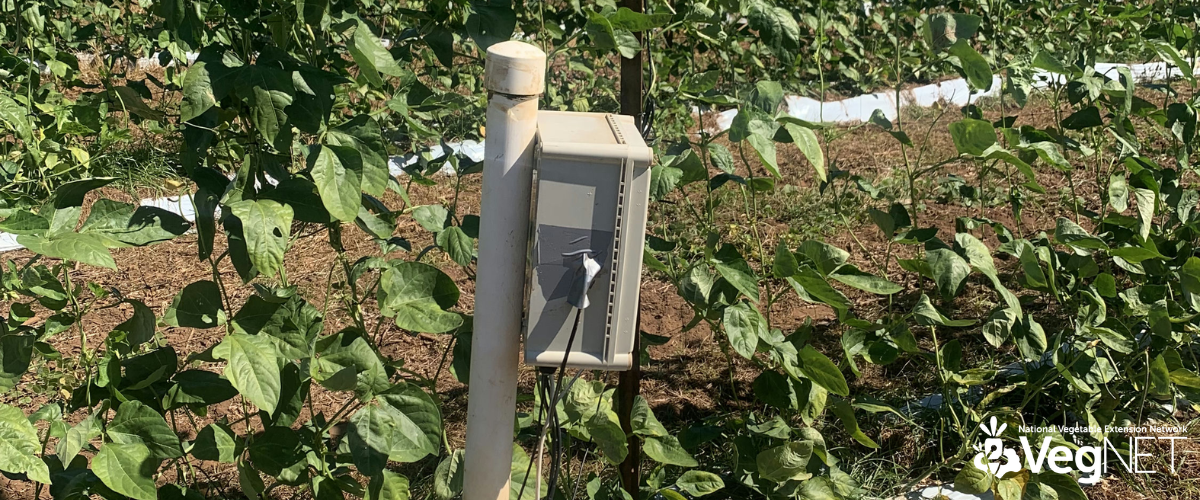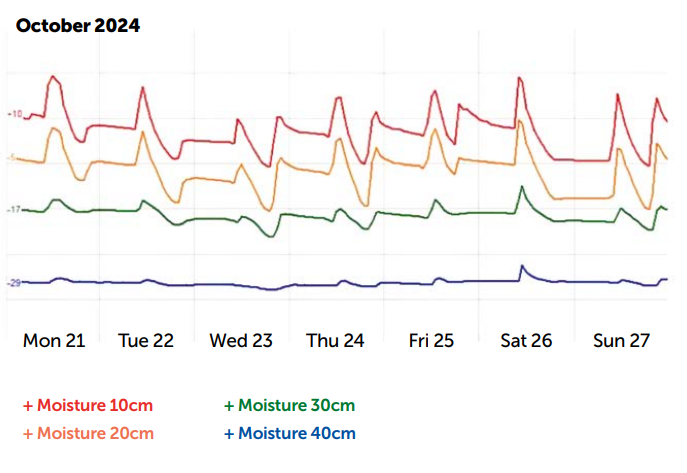Strategic guidance and innovation at the heart of VegNET
26 February 2025
How protected are you and your crops from biosecurity threats?
26 February 2025VegNET Northern Territory Regional Update
A vegetable grower understands that the amount of water their crop needs depends on the type of crop, the phase of growth, the soil type and the weather conditions.
Taking these factors into account, the grower decides how much water they will put on their crop that day. But what if they could see how much moisture is in the soil at certain depths?
Soil moisture monitoring technology is well developed and implemented across Australia, however greater adoption as well as getting the most out of the technology can still be achieved. Soil moisture monitoring technology can come with different capabilities and price ranges, however all aim to help growers better understand when they need to water and for how long.
NT Farmers through the VegNET project teamed up with a vegetable grower in the outer Darwin region to trial soil moisture probes in their snake bean, okra and long melon crops. Two 40cm probes were put in 1m apart in the three different crops to ensure the accuracy of the data.
NT Farmers/VegNET would then meet monthly with the grower to go through the data they were getting and discuss changes they may wish to make from seeing the data; however, it wasn’t long before the grower understood how to read the graphs and used them regularly as part of his decision-making regarding watering.
How does the soil moisture probe work?
Probes come in a range of lengths commonly ranging from 30cm to 120cm. The length of the probe when installed needs to cover the root zone of the crop/tree. For example, if you have melons, snake beans or okra, a 30-40cm probe will cover majority of the root zone.
The probe will have a sensor every 10cm that will indicate how much moisture is at that depth. This will then be presented in a graph accessed by phone or laptop. Some probes will also record soil temperature and electrical conductivity (EC), which measures the salts to give an indication of fertiliser movement in the soil.
Probes often require phone reception to send the data hourly to your device or Bluetooth, where the grower will stand near the probes with their mobile to connect and download the information.
What do the graphs look like and what can they tell you?
The graph (Figure 1) shows one week of probe data in the grower’s okra crop. This is a 40cm probe and each line on the graph above shows the moisture at every 10cm. For example, the red line shows the moisture content at 10cm depth, and the blue line shows the moisture at 40cm depth. As okra have reasonably shallow roots, the grower does not need to be reaching the 40cm depth every watering as this will likely be below the roots meaning wasted water and fertiliser.
The first thing Figure 1 shows us is that the 10cm (red) and 20cm (orange) lines show that the water is not staying in the soil for long. This could be two factors: the first is weather. This week has been a hot week meaning the water can be evaporating from the surface. The second factor is the stage of plant growth. This okra crop is mature and fruiting meaning it is absorbing the water relatively quickly for fruit production.
The second thing this graph is showing us is the difference between one long and two short waterings a day. The graph shows two waterings a day from Monday to Friday and one larger watering on Saturday.
As you can see on the Saturday, the soil moisture rose for a short period of time and then decreased substantially, as well as reaching below the root zone (as showed by the 40cm line in blue). Saturday may have been a day where watering twice wasn’t an option due to time or other farm duties and one day will not have detrimental impacts on the plant, however the graph does show us that, if possible, two shorter waterings can have a real impact in this soil type and weather conditions with the aim to improve quality and quantity.
During Monday to Friday the two shorter waterings have replenished the water levels after evaporation/absorption from the plant roots as well as keeping the water in the top 30cm where the plant can access the water. This means water and fertiliser is not being lost into the 40cm+ zones where the plant can’t uptake from.
 What are the outcomes of the trial so far?
What are the outcomes of the trial so far?
The probes have been of great benefit to the grower with allowing them to fine tune their watering schedule to get the most out of their crop in production and quality. The grower started checking both the probe information through the app as well as digging down in their soil to decide if and when they need to make changes to their current irrigation schedule.
They decided to change from one longer watering to two short waterings daily after seeing that the data was showing that one long watering was going further then the root zone and drying out before the next water. The second water in the evening appeared to improve the quality of the vegetables for picking the next day which the grower was very happy about.
The change in watering has also had a positive impact on their fertigation (putting fertiliser through the drip tape). Previously they would do one long fertigation to ensure the fertiliser concentration was not too high to ‘burn’ the crop. After seeing the probe data, the grower had concerns that the fertiliser may be wasted if passing down below the root zone in big waterings (40cm+). The grower decided to fertigate in the morning without overwatering with a sufficient second watering without fertiliser in the afternoon adequate to avoid burning of the crops.
The two, shorter waterings a day both when fertigating and when not has suited their crops and soil type, allowing the grower to increase their quality of crop at picking as well as become more efficient with their fertiliser.
The farm trial will continue into the 2025 growing season where we will delve further into how increasing water and fertiliser efficiency through using the probes can increase production and/or quality of produce.


